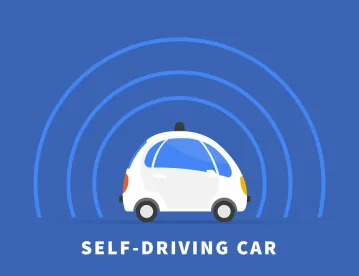Legislators can become heroes.
With one act of non-partisan legislation, your representatives could save thousands of lives, could boost the U.S. manufacturing economy, and could make all of our lives easier, safer, and less expensive.
Oh, and the legislation would pay for itself.
Why would you not do this?
The act of legislation would be to create a no-fault insurance fund for autonomous vehicles. It would be best to operate a nation-wide fund, but that seems unlikely in the near term for Congress. However, any state that organized such a fund would immediately become the hub for the autonomous vehicle industry.
Why would a state want to encourage a large percentage of the vehicles on its roads to be autonomous? Because thousands of lives would be saved every year. Of course, there will still be accidents, injuries, and deaths on the road. That is why we need insurance to protect people harmed. Any time thousands of machines weighing tons move at 30 miles an hour or more the laws of physics will occasionally intrude, and our current economy relies on moving people and goods across distances. We need motorized vehicles to operate our society as it now exists.
Human-operated motorized vehicles are a menace. According to the National Safety Council, there were nearly 40,000 deaths in car crashes in the U.S. last year, which is relatively consistent with the previous two years. Some studies have shown that as much as 95% of these crashes involved some kind of driver error, from disobeying traffic signs and signals to substance abuse to narcolepsy to distraction to simple mistakes like pressing the gas pedal instead of the break. U.S. Department of Transportation researchers estimate that 94% of fatal crashes could be eliminated if all the vehicles on the road were autonomous. (For anyone interested, this report also contains a section called Best Practices for Legislatures, discussing safety-related components that states should consider incorporating into legislation.)
A recent ZD Net article stated,
“Elderly drivers and teenagers are particularly likely to benefit from autonomous vehicles because the cars can monitor a situation that a driver might not be able to themselves, said Wayne Powell, vice president of electrical engineering and connected technologies for Toyota Motors North America.
‘Teen drivers are classically a high risk category of people. If you put a teen driver in a car that was looking out for that person, it won’t let them make bad choices. That could also have an immediate benefit,’ Powell said.”
Autonomous driving control systems remain vigilant.
But autonomous vehicles do not necessarily fit our current insurance structures. 5% of current fatal accidents still represents many deaths, and there will be a transition period before we can approach this level of safety. With no driver to hold at fault, who should be held responsible for the victim’s injuries –the vehicle owner, its manufacturer, its software designer, or someone else? I would suggest that a government-manage insurance fund is the best option.
The fund could operate on a ‘no-fault’ basis, where there is compensation for injured people regardless of who is found to be at fault for the accident. Our current system punishes mistakes in driving, but anyone who has been hit by an underinsured motorist or a city-run vehicle operating under sovereign immunity can demonstrate the holes in the system. We should take care of people injured in accidents and their families, and the current system fails to provide help in many cases.
No-fault insurance is not only more beneficial to society, but it makes more sense in a world of autonomous vehicles. The accidents from these vehicles will be substantially less, so the costs will be greatly reduced. Plus, the logic of blaming the driver in our current system is not as resonant for an AI driver. If the software is flawed, then everyone has a product defect suit against the manufacturer, but if the accident was essentially unavoidable a no-fault insurance pool will make sure that the injured are compensated.
And if the state offers the pool, it can fund the pool through a payment from the sale and licensing of each autonomous car on the road. Removing liability for accidents will greatly accelerate the manufacture’s desire to sell, lease or offer autonomous taxi service in a state, removing one of the largest risk hurdles for companies looking to implement the safer vehicles in fleets and putting them out on the road.
And the self-driving cars are ready to go right now. As reported by Ars Technica, General Motors subsidiary Cruise has received permission to operate its modified Chevrolet Bolts without drivers in San Francisco by the end of 2020, and Alphabet’s self-driving vehicle developer Waymo is expanding its pay to ride service around Phoenix in autonomous vehicles. Until recently, autonomous vehicles had been permitted to drive only with a safety driver available, but that is already changing just as the next generation of AI-driven vehicles is ready to go.
The Ars Technica article tells us, “Four other companies—Waymo, Amazon-owned Zoox, delivery-robot company Nuro, and AutoX—have received permits to test totally driverless vehicles in the state. But none is testing its driverless cars in areas as hectic as San Francisco. The [Cruise] permit is a sign that companies like Cruise “are transitioning out of the development phase of the technology,” says Kyle Vogt, the company’s CTO.”
So now is the time for legislative encouragement to this vital industry. I will leave for later a deeper analysis of the policy reasons for not laying vehicle liability on owners or manufacturers, but it should suffice to say that economically penalizing either of them for driving incidents in which they are not direct participants is illogical and it will discourage the making and use of these much safer vehicles. A government-run no-fault system removed these dis-incentives while protecting people on the roads.
The system would work by barring claims against autonomous vehicles or those associated with them, in exchange for claims that could be raised against a state insurance fund. The fund trustees would evaluate and pay claims like a private insurer in the present system. Rules for resolving claims could be set by public policy, rather than the best interests of private insurers. Vehicle manufacturers or fleet services with the worst safety records over time could be expected to pay more into the fund than those with better safety.
A legislature thinking far enough ahead to draft and pass a law organizing a no-fault insurance fund for self-driving vehicles will immediately place itself at the forefront of autonomous vehicle adoption. This is an issue that both protects businesses and protects people, and it should be seriously considered.




 />i
/>i

